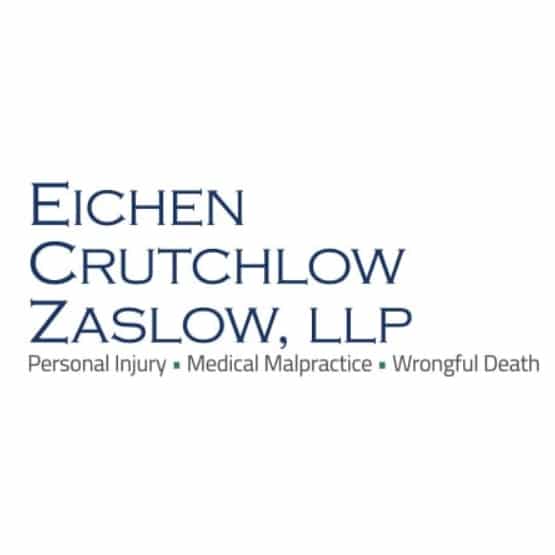Understanding Product Liability: Major Types of Product Liability Cases
When consumers purchase products, they expect them to be safe and function as advertised. However, when products are defective, they can cause catastrophic injuries and illnesses; they can change lives. That’s why product liability laws are designed to protect consumers. They hold manufacturers, distributors, and retailers accountable when their products cause harm. What are the major types of product liability cases, who can be held liable, and what evidence is often needed to prove liability?
What are Manufacturing Defects?
A manufacturing defect occurs when a product is not made according to its intended design, resulting in a flaw that makes the product dangerous to life and health. This type of defect typically happens during the production or assembly process, making the individual product different from the others produced.
Examples of manufacturing defects include:
- A batch of brake pads that were improperly molded, causing them to wear out quickly and fail to stop a vehicle.
- A medical device with a loose part that leads to malfunction, causing injury to the user.
- A children’s toy containing toxic materials that were not meant to be included in the manufacturing process.
Who Can Be Held Liable for Manufacturing Defects?
Liability in manufacturing defect cases often falls on the manufacturer or the supplier of raw materials. In some cases, retailers who sold the defective product can also be held liable if they knew or should have known about the defect.
To prove liability, the injured party must show:
- The product was defective when it left the manufacturer.
- The defect caused the injury.
- The injured party was using the product as intended.
What are Design Defects?
Design defects exist when a product’s design is inherently unsafe, even if it was manufactured according to the manufacturer’s specifications. This means that every product created presents a danger because of a flaw inherent in the design.
Examples of design defects include:
- SUVs prone to rollovers due to a high center of gravity.
- Household appliances with exposed wires that can cause electric shocks.
- Pharmaceutical drugs with dangerous side effects that were not adequately considered in the design phase.
Who Can Be Held Liable for Design Defects in Products?
In design defect cases, manufacturers or product designers can be held liable if the product’s design poses a foreseeable risk. Even if the product was made perfectly according to design, the company may still be responsible for injuries caused by a faulty design.
To prove liability, the injured party needs to demonstrate:
- A safer alternative design was available.
- The alternative design would have prevented the injury.
- The product’s design made it unreasonably dangerous.
What are Marketing Defects?
Marketing defects, often referred to as failure to warn, involve inadequate instructions, warnings, or labels that fail to inform users of potential risks. This can lead to consumers using the product in a way that results in injury because they were not properly warned of the dangers.
Examples of marketing defects include:
- A medication that does not warn of potential life-threatening side effects.
- Power tools that lack instructions on safe handling, leading to injury.
- Household cleaning products without clear labels indicating they are toxic if inhaled.
Who Can Be Held Liable for Marketing Defects?
In cases of marketing defects, manufacturers, distributors, and even retailers can be held responsible for not providing adequate warnings. Liability may also extend to advertisers who promoted the product without highlighting risks.
To succeed in a failure-to-warn case, the plaintiff must prove:
- The manufacturer knew or should have known about the risk.
- The failure to warn was the cause of the injury.
- The warning could have prevented the injury if it had been provided.
What is Breach of Warranty?
A breach of warranty occurs when a product fails to meet the guarantees provided by the manufacturer or seller. These can be express warranties (explicit promises made about the product) or implied warranties (unspoken guarantees that the product is fit for its intended use).
Examples of breach of warranty include:
- A car advertised as having a 10-year warranty that breaks down after 2 years with no support from the manufacturer.
- A home appliance that fails after a few months, despite the retailer’s assurance that it would last for years.
While breach of warranty is not generally involved in product liability cases dealing with catastrophic injuries, manufacturers and retailers can be held liable if a product does not perform as promised after a certain time, leading to injury or damage.
To prove a breach of warranty, the injured party needs to show:
- The warranty was breached (explicitly or impliedly).
- The breach caused injury or financial loss.
- The injured party used the product as intended.
Common Injuries and Illnesses from Product Liability Cases
- Burns and lacerations
- Respiratory issues from exposure to toxic chemicals
- Fractures or concussions from parts
- Serious infections from contaminated products
Can Companies Be Held Liable if Products are Manufactured Overseas?
Yes, companies can still be held liable even if their products are manufactured abroad. U.S. courts have ruled that companies selling products in the United States must ensure their products meet safety standards. This means that if a product manufactured overseas causes harm, the American company that imported or distributed the product can still be held accountable.
Legal Standards Governing Product Liability
In New Jersey, product liability cases are governed by the New Jersey Product Liability Act (NJPLA). This law requires plaintiffs to prove that a product was defective due to its manufacturing, design, or marketing, and that the defect caused their injury. Unlike other personal injury cases, plaintiffs do not always need to prove negligence, as New Jersey follows the doctrine of strict liability for product defects. This means that if a product is found to be defective, the manufacturer or seller can be held liable regardless of whether they acted negligently.
Strict liability ensures that manufacturers are held to a high standard of safety, particularly when consumers’ lives are at risk.
Get Justice for Your Injuries
Product liability cases can be complex, but our team of attorneys is well equipped to handle your case. We’ve won multi-million-dollar verdicts and settlements against some of the largest companies in the US, and we can fight to get you the compensation you deserve.
If you believe you have a product liability case, contact our experienced attorneys at Eichen Crutchlow Zaslow today for a free consultation.

Eichen Crutchlow Zaslow, LLP has purposely remained small in size, because it is important to us that we get to know our clients and their needs. Larger NJ injury firms may churn out case after case, but that’s not how we operate. Partners Barry Eichen, William Crutchlow, and Daryl Zaslow have created a firm with the resources to handle complex litigation, and a team that takes your case personally.
Find out more about Eichen Crutchlow Zaslow, LLP

